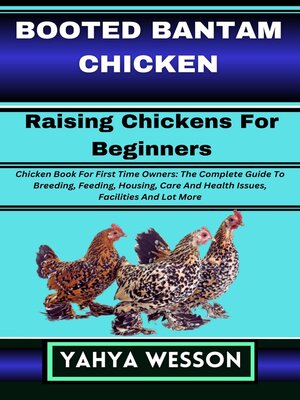BOOTED BANTAM CHICKEN Raising Chickens For Beginners
ebook ∣ Chicken Book For First Time Owners: The Complete Guide To Breeding, Feeding, Housing, Care And Health Issues, Facilities And Lot More
By Yahya Wesson

Sign up to save your library
With an OverDrive account, you can save your favorite libraries for at-a-glance information about availability. Find out more about OverDrive accounts.
Find this title in Libby, the library reading app by OverDrive.



Search for a digital library with this title
Title found at these libraries:
| Library Name | Distance |
|---|---|
| Loading... |
The Booted Bantam chicken breed, also known as the Dutch Booted Bantam, is one of the most unusual and desirable chicken varieties. Because of its feathery feet and distinct appearance, this breed is a popular choice among chicken fans.
The Booted Bantam chicken breed originated in the Netherlands and can be dated back to the 17th century. The breed was created as a display chicken and was highly valued for its unique appearance. However, as a backyard chicken, it has gained appeal and is now often maintained as a pet and for its decorative qualities.
The bird's feathered feet, which resemble boots and give the bird its name, are one of its most distinguishing traits. They have lovely detailed feather patterns and come in a variety of hues, including white, black, and blue. Booted Bantams are also modest in stature, with hens weighing around 26 ounces and roosters weighing around 30 ounces.
The Booted Bantam chicken breed provides a utilitarian purpose in addition to its cosmetic appeal. Because these birds are superb foragers and can flourish in small quarters, they are a good choice for backyard chicken owners with limited room. They also have a sweet nature and make excellent pets.
Finally, the Booted Bantam chicken breed is a one-of-a-kind and precious bird with a long history and practical applications. Its eye-catching appearance, easygoing personality, and flexibility make it a favorite option among chicken keepers, and its significance in the poultry world cannot be overstated.







